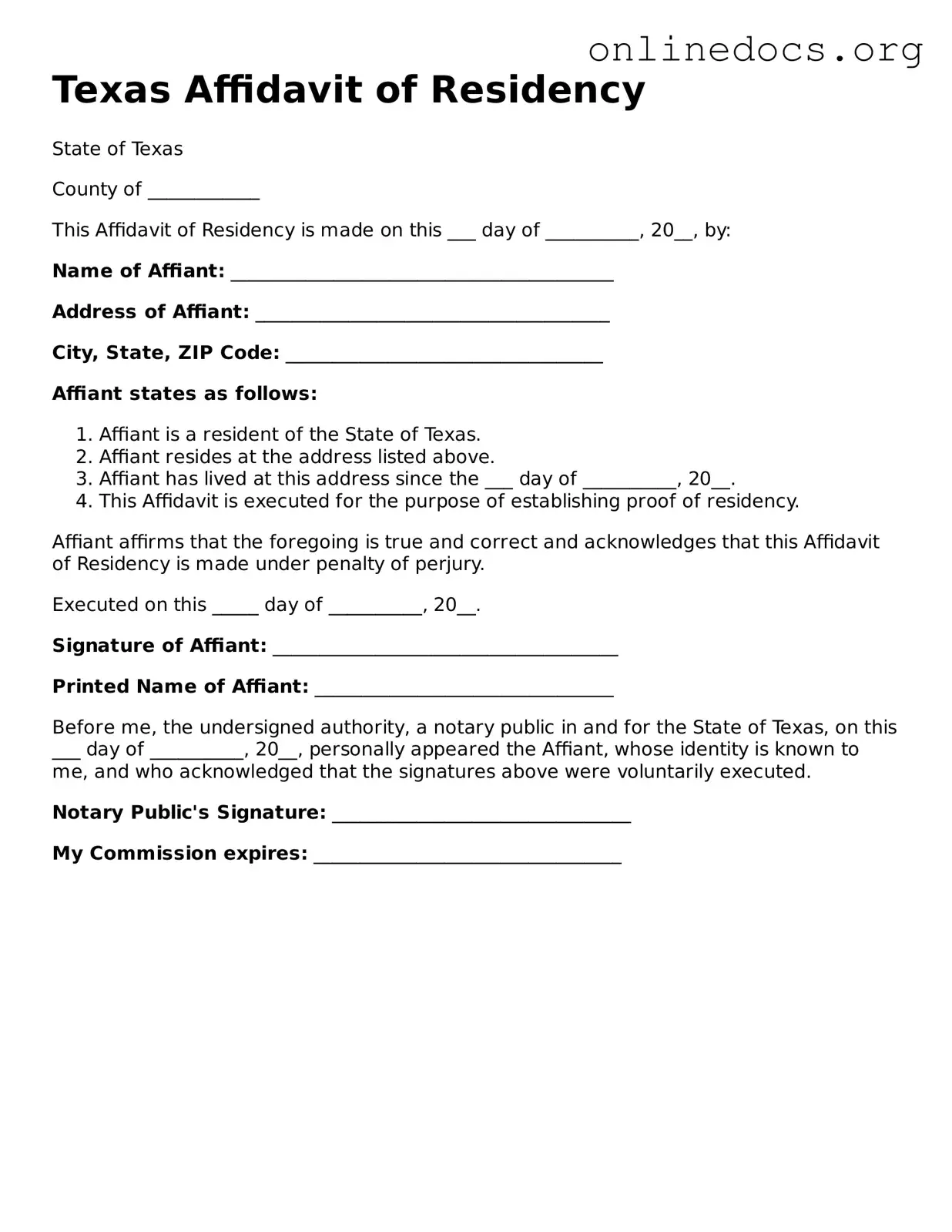The Texas Affidavit of Residency form is similar to the Affidavit of Identity. Both documents serve to verify an individual's identity and residency status. While the Affidavit of Residency specifically addresses where a person lives, the Affidavit of Identity confirms that the individual is who they claim to be. This can be crucial in situations where identity verification is necessary, such as applying for a driver's license or other official documents.
The New York Lease Agreement form serves as an essential tool for defining the essential terms of the rental contract, ensuring that both parties are on the same page. It is important to understand the specifics outlined in this document, as it clarifies the duties and rights of the landlord and tenant throughout the lease period. For more detailed information and resources regarding lease agreements, you can visit legalformspdf.com.
Another comparable document is the Declaration of Domicile. This declaration provides a formal statement of a person's primary residence. Like the Affidavit of Residency, it is often used in legal matters to establish where someone resides. However, the Declaration of Domicile is typically more comprehensive, often detailing the intent to make a specific location one's permanent home, which can have implications for taxes and legal jurisdiction.
The Residency Verification Form also shares similarities with the Texas Affidavit of Residency. This form is often used by educational institutions to confirm a student's residency status for tuition purposes. Both documents aim to establish where an individual lives, but the Residency Verification Form is specifically tailored for educational contexts, ensuring that students qualify for in-state tuition rates.
The Lease Agreement can be seen as another related document. While the Texas Affidavit of Residency serves to affirm residency status, a Lease Agreement is a binding contract that outlines the terms of renting a property. Both documents establish a person's connection to a residence, but the Lease Agreement provides legal rights and obligations, whereas the Affidavit is more of a declaration of fact.
The Voter Registration Application is another document that parallels the Texas Affidavit of Residency. This application requires individuals to provide proof of residency in order to register to vote. Both documents are essential for confirming where a person lives, which is important for determining voting eligibility and local representation. However, the Voter Registration Application is specifically designed for electoral purposes.
Lastly, the Proof of Residency Letter is similar in that it serves to confirm a person's address. Often written by a third party, such as a landlord or employer, this letter can be used in various situations, including applying for government services. While the Texas Affidavit of Residency is a sworn statement made by the individual, the Proof of Residency Letter relies on the credibility of the person providing the verification, thus serving a different function in confirming residency.
